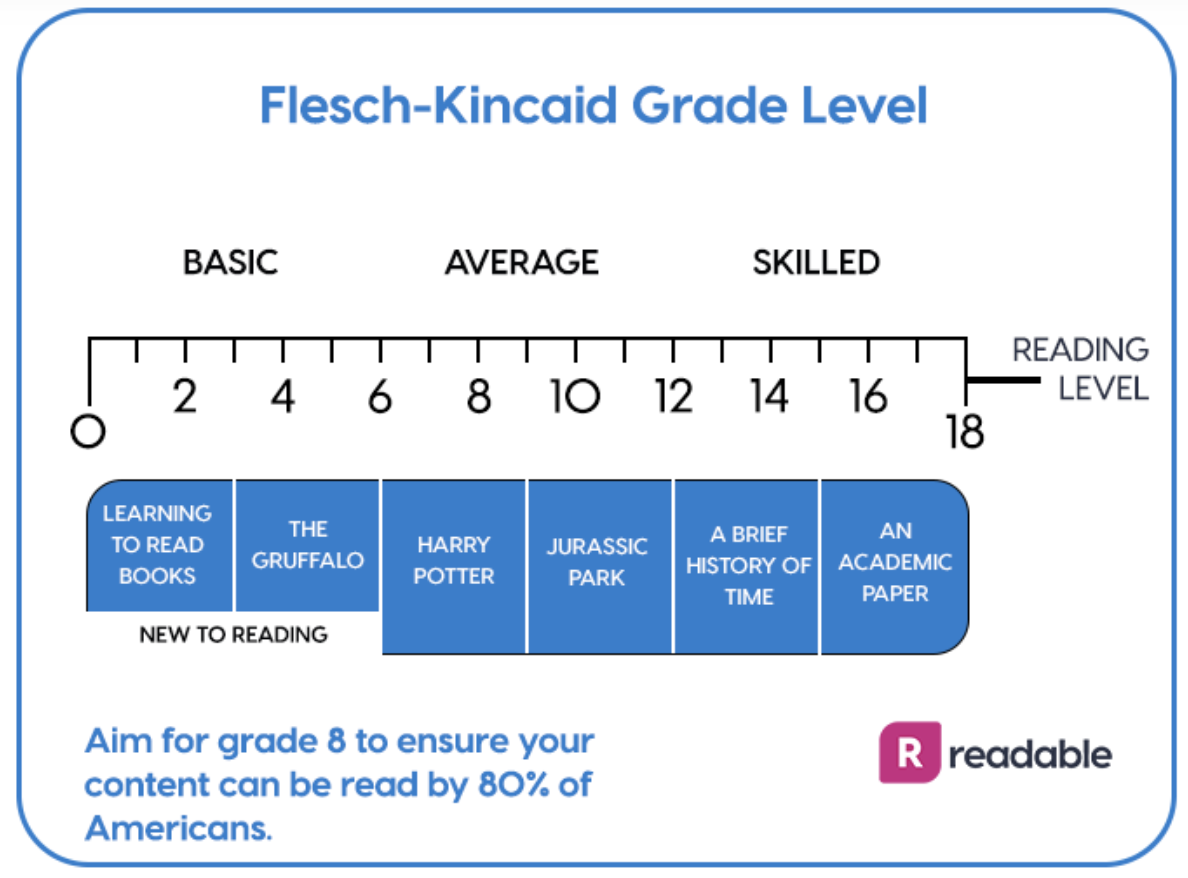Sending your data to our servers, please wait...





Oops... No results found.
Please try a different search phrase.
Resources 11 min read
Creating Blog Content That Drives Traffic: A Checklist
Written by Ayesha Renyard
Content Writer @ Galactic Fed
Expert reviewed by Dallin Porter
Marketing Director @ Galactic Fed
Published 25 Nov 2020
You’ve just written a killer ad headline for your next blog post—20 Epic Recipes to Up Your Grilled Cheese Game—and it’s checking off all the boxes.
- It includes your target keyword: You know that your target keyword (grilled cheese recipe) needs to be in the headline for SEO purposes.
- It’s a relevant topic: You did some keyword research and saw that there are tens of thousands of searches on grilled cheese recipes per month.
- It promises a numbered list: You know that people like skimmable content.
- It’s benefit-driven: You recognize that readers want to know upfront what’s in it for them—and you make it personal by using “you-oriented” language.
- It drives excitement: You’re not willing to put out another post on the “perfect grilled cheese recipe.” Using an eye-catching adjective, like “epic,” makes you stand apart from the rest.
- It considers the competitive landscape: You notice other lists of epic recipes exist, but you offer more than the highest-ranking web page on Google (Sorry Buzzfeed).
That’s it, right? You’ve heard the 80/20 rule before—that on average 80% of viewers read headlines, while only 20% read the post—so your job is done.
Not so fast.
Although headlines are incredibly important for gaining clicks, you need matching quality content if you want consistent organic traffic to your blog. Here are five simple things that you can do to improve your blog articles—so when people do click that headline, they’ll land somewhere worth revisiting.
5 Ways to Create Blog Content That Drives Organic Traffic
-
Create evergreen content
When creating content, you want the shelf life of twinkies—ideally, it will never expire. Sure, pushing out content according to the latest trends or current events will get initial clicks, but the organic traffic to that post will drop off very soon after.
To get the most bang for your buck, we recommend creating evergreen content, which revolves around timeless topics. (Hence its name comes from the evergreen—a tree that retains its green leaves all year round).
We are firm believers that “epic grilled cheese recipes” is a timeless topic. But to play devil’s advocate, traffic may eventually diminish—your Beyond Meat recipe is already old news with the release of Impossible Foods’ meat substitute. So, you may have to update the recipes. However, as Ahrefs confirms in its blog, even evergreen content needs a refresher to keep traffic flowing:
Source: Ahrefs
Another option would be to create one foundational page on the basics of grilled cheese sandwiches—and from there, link out to internal posts on all those wild combinations and dips. Internal links are great for engaging your readers with more of your content, AND it boosts your SEO.
Tip: When you create anchor text for your internal links, make sure that it describes where you’re clicking and how it relates to the blog post. “Click here” doesn’t tell us a whole lot about what’s to come; whereas, “access the recipe to a pesto mushroom grilled cheese recipe” tells the readers (and search engines) that you’re offering supplementary information on the topic.
-
Incorporate related keywords throughout your content
Many of you know that targeting certain keywords is important for your SEO strategy. However, a common misconception is that you need to repeat that exact target keyword, verbatim, throughout your headers and copy. With Google becoming smarter (and more able to smell a keyword stuffer from a mile away), we recommend a different approach: incorporating keywords related to the search intent.
Search intent (or user intent) is the main goal a user has when typing a query into a search engine. Although many people seek the same information, it’s unlikely that they’ll search for the same thing.
Let’s say five people are searching for grilled cheese recipes. Three include that target keyword in their query, but the other two used longtail keywords such as: “how to make a good grilled cheese” and “unique grilled cheese ideas.” You still want to target these users, right?
By lacing your content with related keywords—according to search intent—your copy not only sounds better (How many times can you say grilled cheese recipe?), it also tells Google that your blog post is the real deal and offers content that’s relevant to many more queries.
Tip: Make sure you’re doing everything in your power to get those clicks in the first place. Your meta description is front and center in the SERP. Don’t forget to plug in your targeted keywords here to reiterate what your post is all about.
-
Organize your content using header tags
We know that long-form content (2,250-2,500 words) performs better than short-form content, which means that we need to give our formatting a little extra love—and input some header tags to improve readability.
Header tags are used to separate headings and subheadings on a web page. They rank in order of importance from Heading 1 (or H1) to Heading 6 (or H6), with H1 usually being the title. When converted to HTML, you will see them wrapped in angle brackets like so: <h1>20 Epic Recipes to Up Your Grilled Cheese Game</h1>.
Write your header tags like you would for a book’s table of contents. The H1 is the title—we know that much. The H2s are much like book chapters, describing the main topics you’ll cover. H3s to H6s are similar to subsections within a chapter—supporting the topic at hand. When writing, this approach will keep you on track to deliver what you promised in your headline. When published, your readers can easily follow along.
In your grilled cheese blog post, your H1 would be “20 Epic Recipes to Up Your Grilled Cheese Game.” Each H2 would introduce a different recipe. And H3s to H6s would provide supporting information, such as recipes and tips.
Tip: Header tags can also be incorporated into your SEO strategy. When scanning for relevant content to show its users, search engines pay particular attention to header tags. It’s the perfect spot to throw in some of those related keywords!
-
Stick to short sentences and plain language
In addition to formatting your content for readability purposes, you need the copy itself to read well. How do you do that? Write like you would if you shared your content with your niece, who’s in grade eight. No, really!
Believe it or not, your blog content isn’t the place to flex your vocabulary muscles. Now more than ever, readers want content that is quick and easy to digest. To do that, your content should stick to short sentences and simple words.
We rank readability using a Flesch-Kincaid Calculator, which comprises two scoring systems: Reading Ease and Grade Level. The Reading Ease score reflects how comprehensible the content is and is indicated by a number between 0 and 100. Scores closer to 100 suggest that it is easy to read, while scores hovering near 0 mean that the content is difficult to understand. The Grade Level score suggests what educational level a person will need to understand a particular text.
We recommend plugging in your copy into a Flesch-Kincaid calculator, such as Readable’s, to test its readability, spelling, and grammar. If it scores a grade 8 level, your content can be read by 80% of Americans. Not a bad start, but if you’d like to widen your readership further, keep simplifying!

Source: Readable
Tip: When describing your next grilled cheese recipe, skip words like “saporous.” “Mouth-watering” or “tasty” will do.
-
Use images and videos liberally
Long-form content is in, but to keep your readers engaged the whole time, you can’t just depend on organized, well-written copy. (As a writer, I’m just as sad about this as you are.)
To get your readers moving from one header tag to the next, you’ll need to break it up with some visuals. You can write about grilled cheese sandwiches all you want. But to really get your readers salivating, you gotta show them the goods.
Source: Giphy.com
- A high-quality feature image: Because your feature image sits at the top of the post, it sets the tone for the rest of your content. By default, it will also be pulled up first when sharing the link on social media. So keep first impressions positive, and choose an eye-catching image that is high resolution and reflective of the post’s content.
- Infographics: Readers love infographics, especially when you’re explaining statistics or data. Plus, they’re great for sharing on social media, which can increase your blog’s visibility and traffic!
- Videos: Ten years ago, video content was optional. Now we’re hitting a point where videos are a must, and there are many statistics to prove it. Videos are effective in supporting content—when people simply don’t want to read the copy. A short video on how to make a quadruple decker grilled cheese? Now that’s a game-changer for your blog post.
Tip: You’ve now formatted your blog post using headers and visuals. Curious how it flows from your audience’s perspective? Try out Crazy Egg’s heat map tool to see how they navigate the web page and where they’re getting stuck.
Time to Publish, time to share!
You just wrote a killer blog post that corresponds with a killer headline—20 Epic Recipes to Up Your Grilled Cheese Game—and it’s checking off all the boxes. It’s peppered with just the right amount of related keywords, so it sounds natural yet increases SEO. You used short sentences and plain language, so everyone can easily read and enjoy the recipes you offer. But for those who are skimming, they can find the recipe they’re looking for because you used header tags. Lastly, you found some standout visuals—because you know that people eat with their eyes first.
As for being evergreen, that’s debatable. But you don’t have to convince us.
Once you’ve published, make sure your content is easy to share. Simple URLs, clear anchor texts, and social sharing buttons are all important for driving organic traffic. Want a little bit of a boost? Reach out to our team of paid media experts. It doesn’t hurt—in fact, it could really help!

Ayesha Renyard
Content Writer @ Galactic Fed



